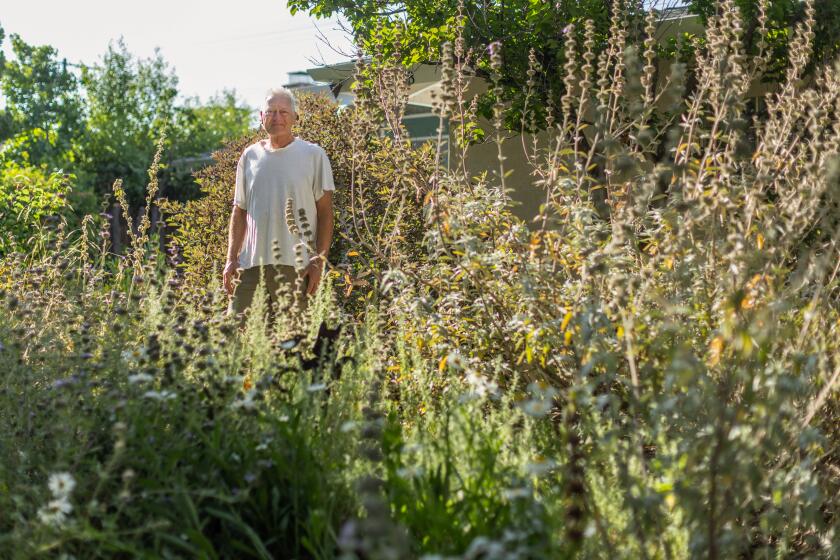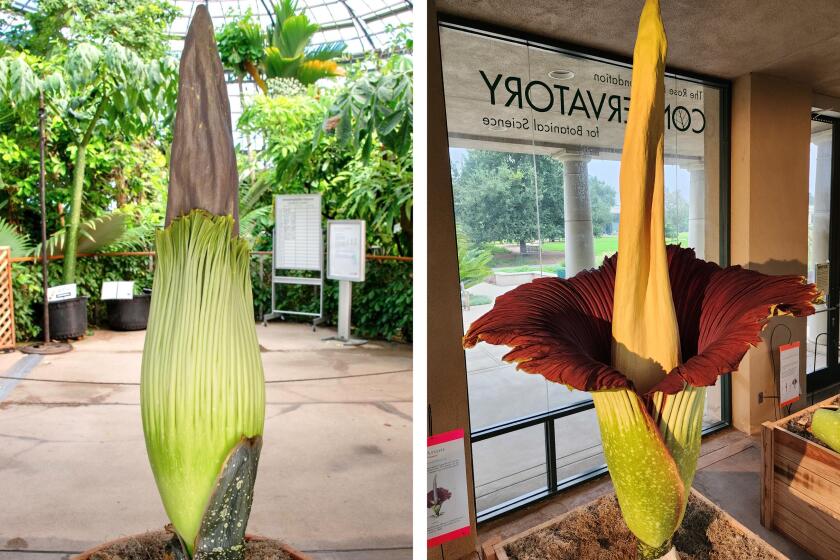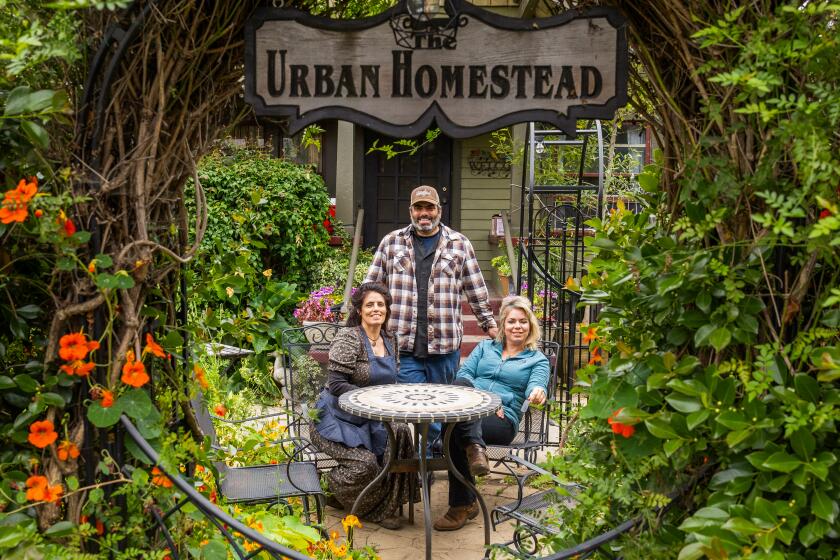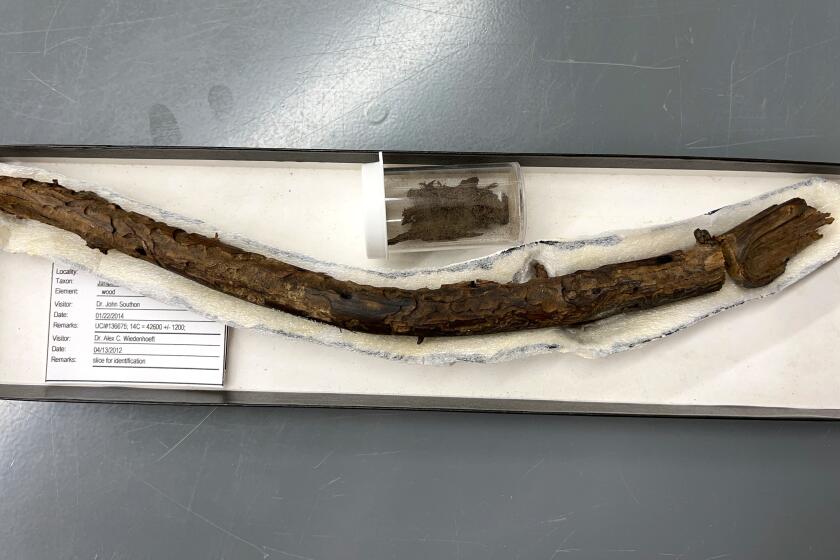Avocado Tree’s Demise Is the Pits for Growers
When the World Avocado Congress meets next month in Spain, among the topics for debate will be how to properly lay to rest the mother of all Hass avocado trees, which died last year and now sits in pieces at a nursery near Ventura.
Should the wood from the La Habra Heights tree, the genetic wellspring for every Hass avocado in the world, be carved into commemorative plaques, souvenir pens or keepsake guacamole bowls?
“It’s not much to look at,” said Brokaw Nursery sales manager Larry Rose, who has looked after the tree since it succumbed to root rot and was chopped down last September. “But that was a real special tree. That’s why we’ve got this pile of wood here, scratching our heads and wondering what to do with it.”
The final decision will rest with the California Avocado Society, a nonprofit group that provides marketing and cultivation information to 900 members worldwide.
“Who knows whether it will end up being pencils or sculptures,” said society President Derek Knobel, a ranch manager in south Orange County. “Most of the growers were alerted to its demise. A few tears were shed. It was one of a kind and it started an industry.”
That the tree became one of Earth’s most prolific mothers was truly a stroke of fortune.
The mother tree was planted along with other seedlings in 1926 by Rudolph Hass, a postman turned gentleman farmer who tended a small spread in a formerly rich agricultural area that straddled the Los Angeles County-Orange County border.
Hass wanted to use the seedling as root stock on which to graft other varieties of avocado tree buds. But the grafts did not take, and Hass planned to cut down the tree until his children convinced him to let it stand, saying they preferred the taste of its fruit to that of more popular varieties at the time.
“My folks always believed it was divine intervention,” said Hass’ son, Charles, a retired accountant from Westlake Village. “They felt [the tree] was a special gift from God.”
After experimenting with the fruit, Hass took out a patent on the tree in 1935 and forged a partnership with Whittier nurseryman Harold Brokaw to grow and promote the new variety, using buds from the mother tree.
Tens of thousands of buds were snipped from its branches over the years. And millions more were clipped from the mother tree’s offspring, each producing an exact genetic duplicate of the original.
Other avocado varieties were more popular when Hass and Brokaw started their push. In fact, they had trouble marketing the fruit because consumers were initially turned off by its bumpy, black skin.
But the avocado’s taste, durability and longer growing season all helped to make the Hass the most popular variety in the world. Today, it makes up 95% of avocado production in California, which is by far the nation’s leading producer of the pear-shaped fruit.
“The variety became the standard by which others were compared,” said Ben Faber, an avocado expert with the University of California Cooperative Extension office in Ventura. “Certainly [the mother tree] should be immortalized for having transformed avocado production around the world.”
A bronze plaque is the only reminder of the place where the mother tree once stood, towering six stories above the ranch-style houses around it. Root rot for years had undermined the tree, and a work crew arrived last fall to cut down in half a day what took decades to create.
Now the remnants are splashed with a protective latex coating and wrapped in a dirty black tarp, an unexceptional bundle that amounts to little more than a cord of wood but provides a historic link to the birth of a $380-million-a-year industry.
Delegates at the World Avocado Congress, which meets every four years, will be asked to recommend potential uses for the wood.
San Diego County avocado grower Jerome Stehly, who doubles as chairman of the California Avocado Commission, said that he hasn’t given a great deal of thought to the issue but hoped the logs would be put to good use.
“I think a tree should continue to be something useful, like a bowl or something like that,” said Stehly, a third-generation grower. “That was a big, big part of the history of the avocado industry. It was just a shame it died.”
Brokaw Nursery manager Rob Brokaw, whose great-uncle, Harold, worked with Rudolph Hass to build the industry, said he also wanted to see the wood live on as a reminder of that seminal period. But that is not the most important thing, he said.
“Really, the tree lives on,” the nurseryman said. “We are propagating many thousands of them every year.
“The wood really isn’t that significant to me. As long as we have living examples of that tree throughout the world, that’s where we will continue to feel the connection.”



